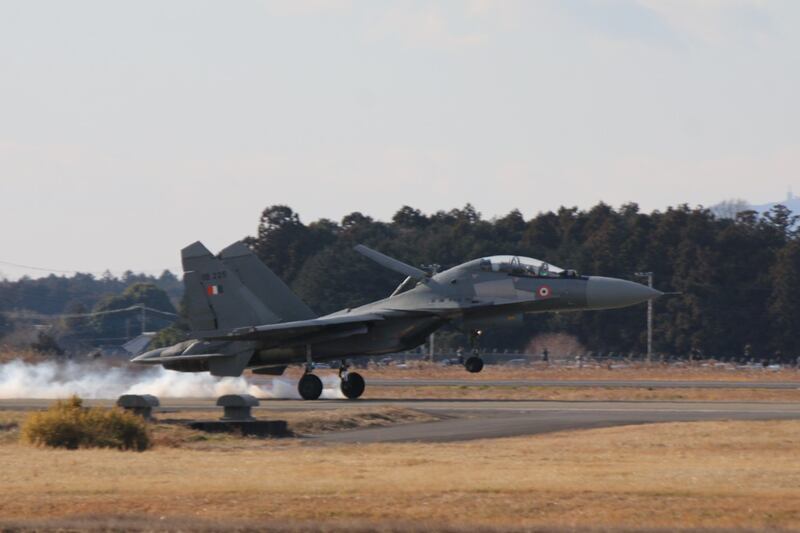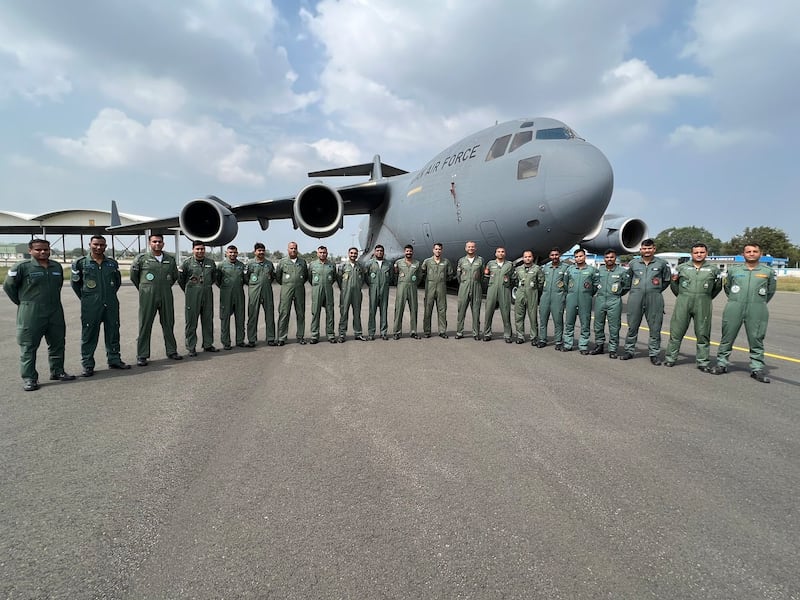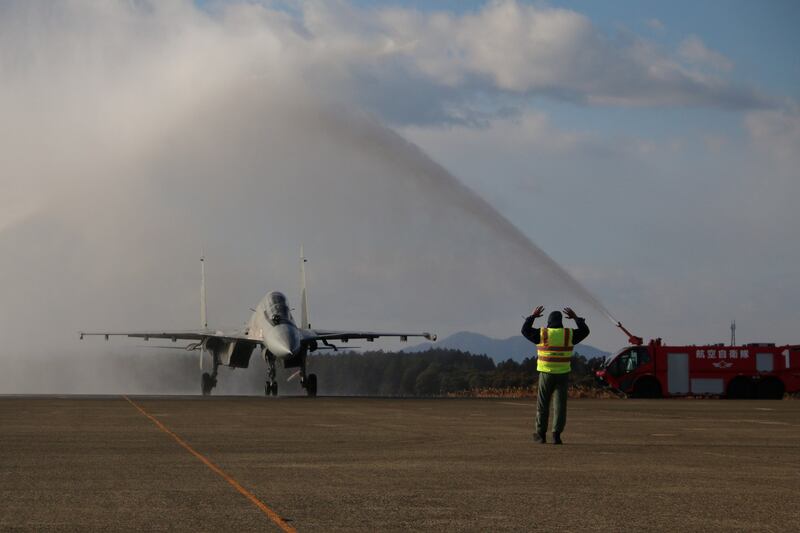The first joint combat air drills between Japan and India are underway, signaling a deepening of the two country’s security ties as China continues to exert power and influence in the Asia-Pacific.
Beijing is watching the development closely, with a spokesman calling on Tokyo and Delhi to “do more to enhance mutual trust” in the region.
The maiden Veer Guardian 2023 exercise, delayed for two years due to the COVID-19 pandemic, is taking place from Jan. 16-26 at Hyakuri and Iruma air bases outside Tokyo.
In 2019, Japanese and Indian air forces conducted a joint exercise codenamed Shinyuu Maitri in India, but it focused on mobility and tactical interoperability rather than combat.
The Indian Air Force has brought to Veer Guardian a contingent of four Su-30 MKI, two C-17 Globemasters and an IL-78 tanker, it said in a Twitter post.
Japan contributed three Hikotai Mitsubishi F-2A/B fighters in addition to a number of F-15J/DJ Eagles and Hiko Kyodogun Eagles.

Shunji Izutsu, chief of staff of the Japan Air Self-Defense Force (JASDF), told a news conference that the exercise would "improve the tactical skills of the JASDF, promote mutual understanding between the Japanese and Indian air forces, and further deepen defense cooperation."
“Japan and India are in a special strategic global partnership relationship,” he said, adding that “India is a like-minded country” to Japan.
The two countries are part of the Quadrilateral Security Dialogue, or Quad, a security grouping between the U.S., Australia, India and Japan.
Beijing has repeatedly criticized the grouping, calling it an attempt to create a NATO-style alliance in Asia- Pacific.
Chinese Foreign Ministry's spokesman Wang Wenbin told reporters in Beijing on Tuesday that both Japan and India "should do more to enhance mutual trust in the security sphere between regional countries and act in the interest of peace and stability in the region."

‘Ambitions instigated by U.S.’
China's hawkish media outlet the Global Times quoted Chinese observers as saying that "both Japan and India are being lured by the U.S. to join its Indo-Pacific strategy in containing China."
The Chinese analysts played down both India and Japan’s capabilities, saying “if a conflict breaks out involving either Japan or India, neither country is likely to have the strategic will or sufficient capability to enter combat.”
Japan has grown increasingly aware of China’s expanding clout in the region.
Last month, Tokyo released its national security and defense strategies, in which China was identified as an unprecedented “strategic challenge.”
Japan also supports the U.S. Indo-Pacific strategy which points out that China’s “coercion and aggression spans the globe, but it is most acute in the Indo-Pacific.”
Japanese Defense Minister Yasukazu Hamada was in Washington last week to take part in the first Japan-U.S. Security Consultative Committee to discuss further strengthening deterrence and response capabilities of their military alliance.
Tokyo plans to boost its counterattack capabilities, especially because of the potential risks of conflict over Taiwan, the situation on the Korean Peninsula and territorial disputes in the South China Sea.
China has increased its air incursions into areas in the Taiwan Strait and East China Sea, making air deterrence one of the priorities for, said Collin Koh, a regional military analyst based in Singapore.
“China has become more and more a common threat for countries in the region,” noted Koh, Research Fellow at the S. Rajaratnam School of International Studies.
He added that since the Shinzo Abe administration, Japan has reached out further eastward, and to India, with more bilateral joint exercises in the pipeline.
The most recent exercise – Dharma Guardian-2022 – was conducted between the two armies in Belgaum, India.
Since 2012, Indian and Japanese maritime forces have also trained together in a series of Japan-India Maritime Bilateral Exercises (JIMEX).

This time two air forces are conducting "various aerial combat drills," said the Indian Ministry of Defense.
“They will undertake multi-domain air combat missions in a complex environment and will exchange best practices,” it said.
The combat exercise would also help Japan to learn more about the Russian-origin Su-30MKI aircraft that India has brought to the drills, according to Collin Koh.
China’s J-16 fighter jet is also a developed version of Russia’s Sukhoi Su-30, so the exercise would offer “a valuable opportunity” for the JASDF, as well as for the U.S. and NATO partners, to simulate Russian and Chinese fighter aircraft.
China’s Global Times, however, quoted experts as saying that “the Su-30MKI is specially customized for India, and the versions imported by China are different from the Indian version.

